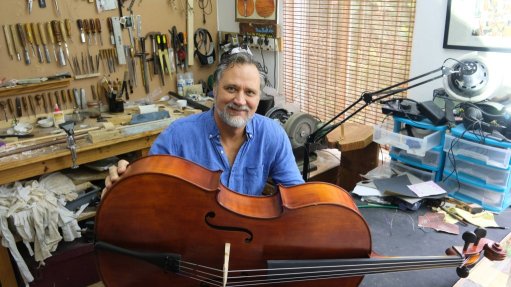Denmark’s green technology export thrust
I was invited by the Danish Embassy in South Africa to undertake a study tour of the Nordic country with fellow South Africans. There were 12 of us from both the public sector and the private sector. We were hosted by an organisation called the State of Green.
The main aim of the State of Green is to promote greening technologies and the greening economy in Denmark and outside the country.
We focused primarily on energy efficiency technologies and the policy instruments the Danish government has used since the 1970s. The oil crisis had a dramatic effect on the way people thought about energy issues in Europe and Denmark, in particular. The crisis was so acute that the Danish government banned the use of cars on Sundays. All the developed economies, which are highly dependent on oil imports, reacted to the crisis by implementing policy reforms. Some countries merely had a short-term response, while others made the reforms a permanent feature of their energy system. Denmark and many other European countries introduced long-term measures to improve the use of energy and increase the economic output from using less energy.
In time, a suite of instruments – from energy efficiency regulations to taxes and technology incentives – evolved to reduce energy consumption in various sectors.
The presentations and tours were divided into two: a broad policy and regulatory sweep of energy efficiency measures and progress in Denmark and the development of cutting-edge technologies. I will share some vignettes on both as they are interrelated.
Energy costs and taxes in Denmark are very high. This is not only to drive savings and reduce environmental externalities, but also enhance energy security. The introduction of taxes is also aligned to other enabling conditions, such as subsidies for retrofits or programmes to enhance energy efficiency. More importantly, the Danish electricity and energy sector had to undergo fundamental reform to allow consumers to switch to alternatives that are either provided by generators of power or distributors. Competition is key in this market, as it ensures that prices are affordable. Energy market reforms were linked with stiffer rules for energy use.
This allowed systemic pressure to be applied through the regulatory system and simultaneously made it possible for conditions to be created for behavioural change to have real and practical alternatives. It is important to recognise that Denmark is a small, homogeneous country that works on the basis of consensus politics. In many respects, it is like a village.
Further, its level of income inequality is low and its citizens have one of the highest per capita incomes in the world. The effect of the energy efficiency measures is that it drove the development of new technologies. We visited several companies.
To provide context: Denmark has evolved from an agricultural economy into a thriving high-tech, industrialised and service economy. Denmark aspires to be a major exporter of green technologies in the future. The State of Green’s role is to support the country’s efforts to achieve this aspiration. My sense is that the development of new industrial capability or a transition to this was not difficult for Danish companies as they could use existing knowledge and plant capacity to do new things. Certainly, during my study tour, I saw many examples of this.
Smaller firms are more adept at driving new innovations. Interestingly, the larger firms take time – they are risk averse and have bureaucracies, believe it or not, that tend to stifle the rapid development or deployment of new innovations. However, when a technology driven by smaller venture capital firms extricates itself from its ‘valley of death’ phase, the larger firms step in because they would have a better capital base to facilitate rapid commercialisation, and the smaller firms tend to woo them because entrepreneurs want security and scale.
I mention all this because firm-level innovation and adoption are key for the success of not only low-carbon transitions but also exports. Exports are often derived from internal pressures for innovation or the establishment of foreign firms in a local market. These firms would bring capital, skills and know-how.
At some point during the tour, we visited a local water utility, which has a 150 km distribution network that is privately run and community owned. There are many such ownership models in Denmark, which come out of the history of agricultural cooperatives. The default rate of the 5 000 or so users is about three households a year.
So, what are the key take-homes from the trip? They are:
• We are reaching a stage in South Africa where both water consumption and energy consumption have to be more efficient.
• Change takes time – it requires persistent political will and good coordination between the private sector and the public sector.
• Innovation is in the policy and regulatory domain as it is in the hardware. Denmark does well in exporting both and, thanks to the 1970s oil crisis, the Danes have simply built their systems based on this crisis and did not abandon the political will to do things, as the US did.
For this, they are far better off and more adaptable to changing situations with regard to energy supply and demand.
In the meantime, Denmark continues to enjoy one of the highest standards of living in the world.
Article Enquiry
Email Article
Save Article
Feedback
To advertise email advertising@creamermedia.co.za or click here
Comments
Press Office
Announcements
What's On
Subscribe to improve your user experience...
Option 1 (equivalent of R125 a month):
Receive a weekly copy of Creamer Media's Engineering News & Mining Weekly magazine
(print copy for those in South Africa and e-magazine for those outside of South Africa)
Receive daily email newsletters
Access to full search results
Access archive of magazine back copies
Access to Projects in Progress
Access to ONE Research Report of your choice in PDF format
Option 2 (equivalent of R375 a month):
All benefits from Option 1
PLUS
Access to Creamer Media's Research Channel Africa for ALL Research Reports, in PDF format, on various industrial and mining sectors
including Electricity; Water; Energy Transition; Hydrogen; Roads, Rail and Ports; Coal; Gold; Platinum; Battery Metals; etc.
Already a subscriber?
Forgotten your password?
Receive weekly copy of Creamer Media's Engineering News & Mining Weekly magazine (print copy for those in South Africa and e-magazine for those outside of South Africa)
➕
Recieve daily email newsletters
➕
Access to full search results
➕
Access archive of magazine back copies
➕
Access to Projects in Progress
➕
Access to ONE Research Report of your choice in PDF format
RESEARCH CHANNEL AFRICA
R4500 (equivalent of R375 a month)
SUBSCRIBEAll benefits from Option 1
➕
Access to Creamer Media's Research Channel Africa for ALL Research Reports on various industrial and mining sectors, in PDF format, including on:
Electricity
➕
Water
➕
Energy Transition
➕
Hydrogen
➕
Roads, Rail and Ports
➕
Coal
➕
Gold
➕
Platinum
➕
Battery Metals
➕
etc.
Receive all benefits from Option 1 or Option 2 delivered to numerous people at your company
➕
Multiple User names and Passwords for simultaneous log-ins
➕
Intranet integration access to all in your organisation


















